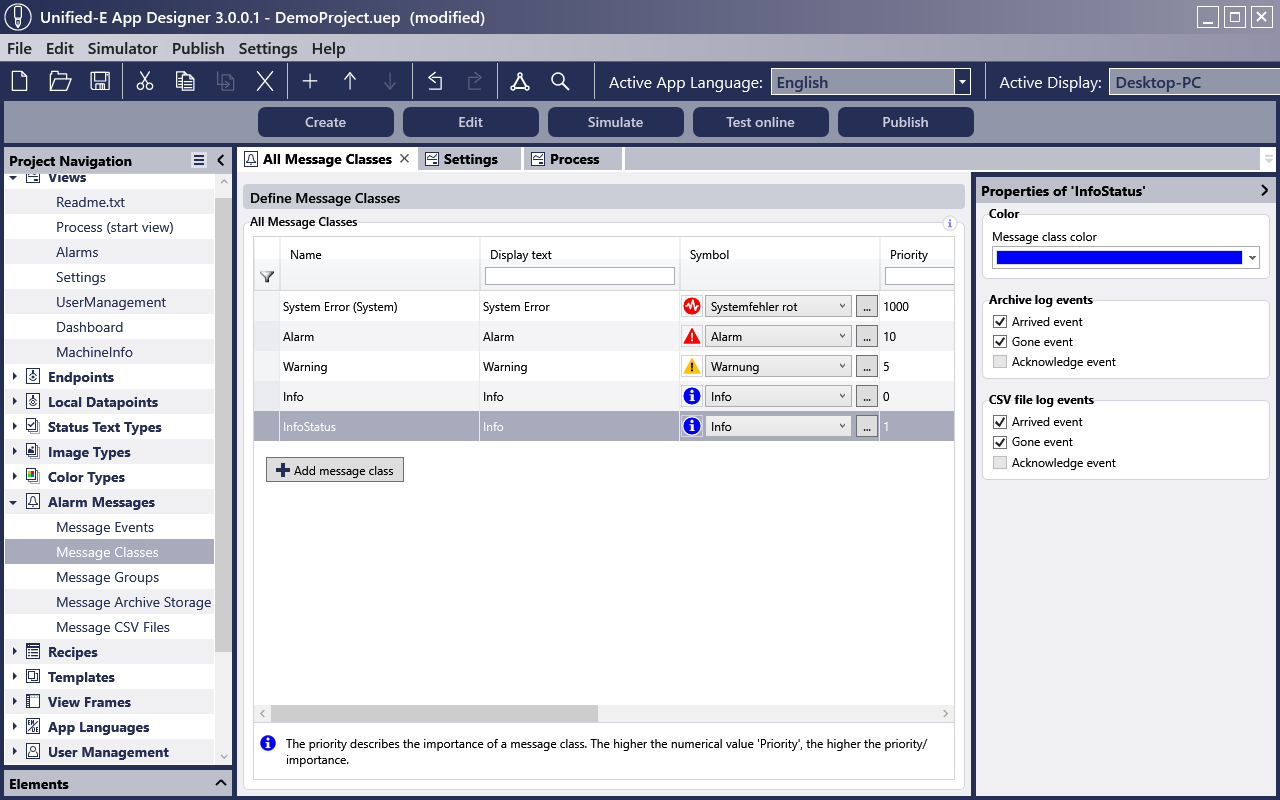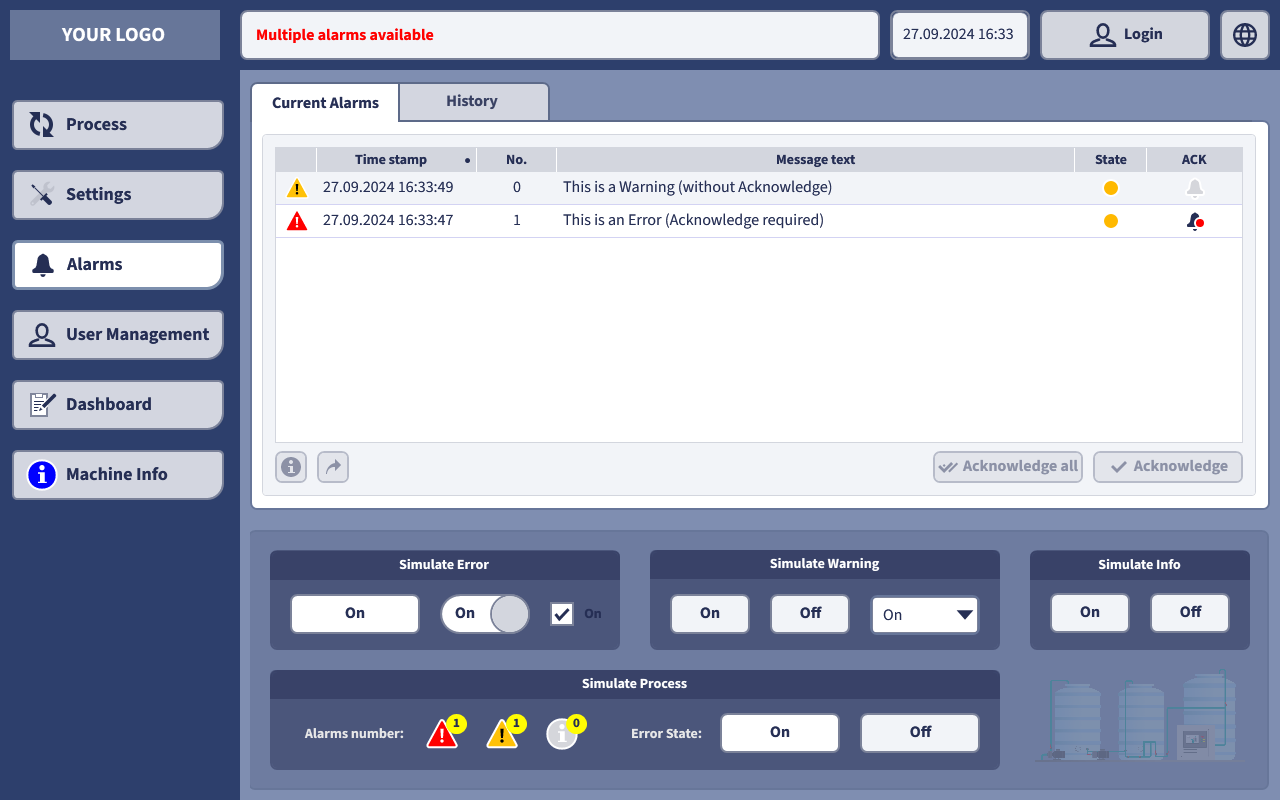Keep an Overview with the Message Table
With the view element 'Message table', pending alarm messages are displayed in a table in real-time. For structuring, there are message classes that are assigned to message events and each represented by a defined color and symbol. Additionally, message groups and message priorities can be used to avoid losing track of many messages.
The message table can be customized very individually; for small displays like smartphones, the message table can display messages in tiles. All information of a message is then in a tile instead of a table row. Pending alarms can be configured so that they can only be acknowledged by authorized users.

Multiple instances of message tables can be created. For example, an info table and an alarm table can be created separately; the relevant message classes just need to be configured for the respective message tables.
Traceability Thanks to Message Archive
Archived alarms or messages can be visualized with the view element 'Archive message table''.
By default, messages are managed in SQLite databases. It is a file-based database, so no additional installations are required.
You decide whether archived messages should always be retained or only messages from the last few months should be retained for space reasons.
Simplified Message Display Elements
It is often tight on the HMI screen, and the information to be displayed must be carefully selected. Important general information often appears in the header or footer. For this purpose, the view elements "Message Symbol", "Message Counter", and "Message Text" were created.
With message displays, information such as "Error present" can be optimally communicated in a header with little space. By clicking on a message display, a selected view, e.g., a message view, can be opened.

Writing Alarms to CSV Files
All alarm events such as "Arrived" or "Gone" can also be written to one or more CSV files. For example, a process result with the associated batch or lot number could be logged in a CSV file after each process run.
The generated CSV files are very useful for the following requirements:
- Data Exchange:
CSV files are used for imports into third-party tools. - Message Log:
CSV files serve as a simple alarm or info message log and can be easily viewed in tools like text editors or Excel. - Archiving:
CSV files are easier and more clearly archived compared to databases.
To prevent CSV files from growing indefinitely in size, a configuration is possible here, as with the message archive, so that, for example, a new file is created after 6 months.
Alarm Emails and Push Notifications to the Smartphone
Often, when a critical alarm occurs, it is also necessary to notify production managers or other employees. Therefore, when configuring a message, it can be decided whether an email or a push notification to a mobile device should be sent in addition to the entry in the message table. These functions require the Unified-E App Manager.
Push notifications can be configured so that only certain user roles receive a push notification. The recipient emails must be registered in the Unified-E App Manager with email address and user role.